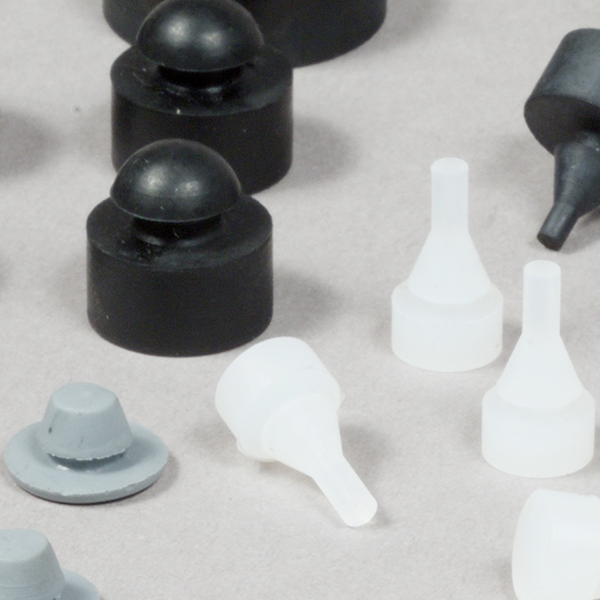Custom Rubber Molding Capabilities
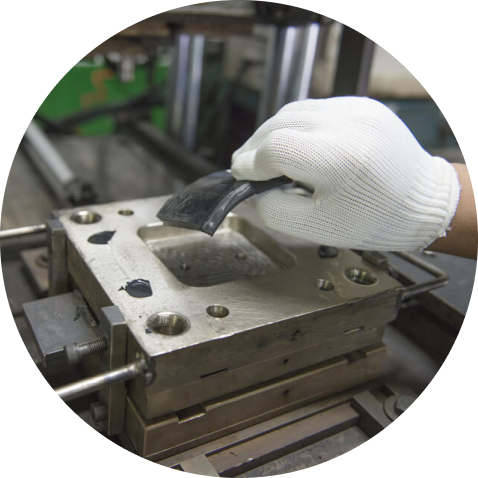
Compression molding
Involves pressing two sides of a mold together with a pre-shaped rubber form inside. The pre-form contains extra rubber to ensure the mold is fully filled, preventing defects in the final product.
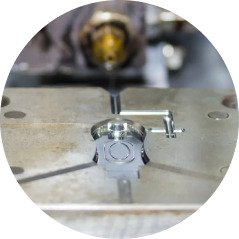
Rubber injection molding
Precise amount of rubber is rapidly injected into a heated, closed mold under high pressure. This technique offers advantages such as shorter cycle times, lower unit costs, and minimal material waste.
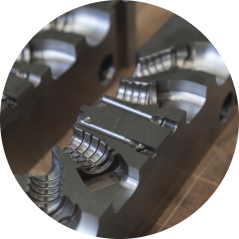
Transfer molding
Combines elements of compression and injection molding. Uncured rubber is placed in part of the mold, compressed under pressure, and then forced through a small hole into the mold cavity to cure.
Custom Rubber Molding Specs
RPM offers advanced rubber molding solutions tailored to meet precise specifications and industry standards. With expertise in compression, transfer, and injection molding, we deliver high-quality, durable rubber components designed for diverse applications.
| Criteria | Spec | Notes |
|---|---|---|
| Molding Processes | Compression Molding, Injection Molding, Extrusion, Transfer Molding | Compression molding for durability, injection molding for complex shapes, extrusion for high-quality seals, and transfer molding for shock-absorbing parts. |
| Material Compatibility | EPDM, Nitrile, Silicone, Neoprene, Natural Rubber, FKM (Viton), SBR, HNBR, FFKM (Perfluoroelastomer) | Custom rubber parts are manufactured using optimal molding techniques based on part design, material properties, and production volume requirements. |
| Maximum Part Size | Up to 24″ x 24″ x 6″ (610mm x 610mm x 152mm) | Custom capabilities for larger or more complex geometries available upon request. Consult with our engineering team for detailed analysis and feasibility studies. |
| Tolerances | We follow the Rubber Manufacturers Association (RMA) standards. High Precision (A1) through Non-Critical (A4). | As a standard we quote using commercial (A3) tolerances. For more critical applications we can quote High Precision (A1) where required. |
| Shore Hardness Range | Shore A 30-90 | Wide range of hardness options to meet specific application requirements, from soft, flexible components to hard, durable parts. |
| Chemical Resistance | Resistant to oils, fuels, acids, alkalis, and solvents | Materials are selected and compounded to withstand harsh chemical environments, ensuring long service life and reliability in demanding applications. |
Applications
Many industries require rubber manufacturing services for different equipment purposes. Whether you are looking for replacement critical components or new parts for innovative designs, RPM Industrial Rubber Parts can help.
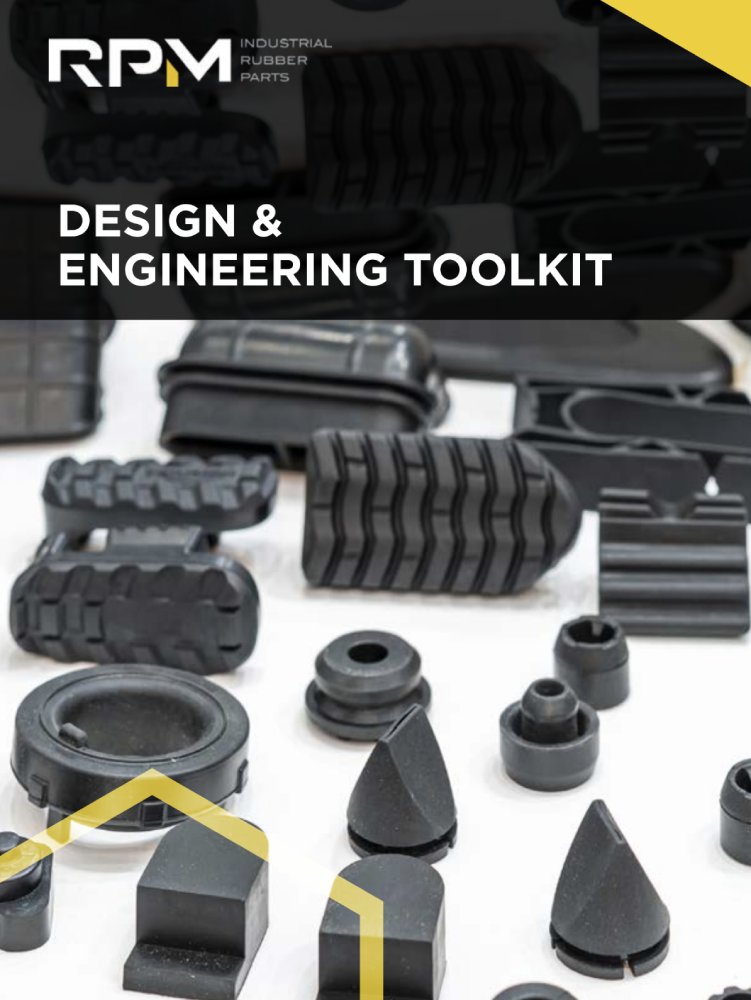
Looking for help in designing a new rubber part?
Get a free and valuable resource for finding or custom designing the exact part you need.
Standard Molded Rubber Parts
Thousands of industrial rubber parts. Find yours.
Related Resource
Rubber Compression Molding Guide
Our free guide offers insight on this tried-and-true manufacturing method for custom rubber parts.
Our Proven Process
Our extensive experience has tested and perfected our process over the last 50 years.

Step 1
Consultation
& Design
We work closely with you at all levels to understand your needs so that we can design and deliver the right part for your unique application.

Step 2
Prototype
& Pre-production
When the design has been confirmed, we fabricate tooling, run some initial prototypes and send to you for validation and/or approval.

Step 3
Production
Once the fit and function has been proven and confirmed, we’re ready to work with you to commence a full production run.

Step 4
Delivery
When the order is complete, our warehouse team package’s and ships the product, ensuring on time delivery. We also offer warehousing services to help you manage your inventory and lead times.
Frequently Asked Questions

Find quick answers to your questions here or contact us directly for any additional inquiries.
What are the benefits of rubber compression molding?
Compression molding offers several advantages, including high production rates, excellent dimensional stability, and the ability to produce complex shapes with intricate details.
Which is better? Natural rubber or synthetic rubber?
Natural and synthetic rubbers each have strengths. Natural rubber is great for flexibility, while synthetic rubbers can be customized for specific needs like heat resistance. The best choice depends on the specific application.
How do I select a vibration isolator for my application?
To select the right vibration isolator, start by determining the frequency and amplitude of the vibrations, the weight of the equipment, and the desired level of isolation. Contact the team at RPM for assistance.
What is rubber-to-metal bonding?
Rubber-to-metal bonding involves creating a strong and durable connection between rubber and a metal surface, resulting in a composite material that combines the flexibility and shock absorption of rubber with the strength and rigidity of metal.
What is an engine mount and how does it work?
An engine mount is a flexible component that isolates the engine from the vehicle’s frame, reducing vibrations and noise while allowing for slight engine movement during operation.
What is a rubber sandwich mount?
A rubber sandwich mount is a vibration isolation device consisting of two metal plates with a layer of rubber sandwiched between them, used to reduce the transmission of vibrations.
Ready to get started?
If you need rubber, we’ll have it. If we don’t have it, we’ll find it. If we can’t find it, we’ll make it.
Or Call Us: 888-842-5668













